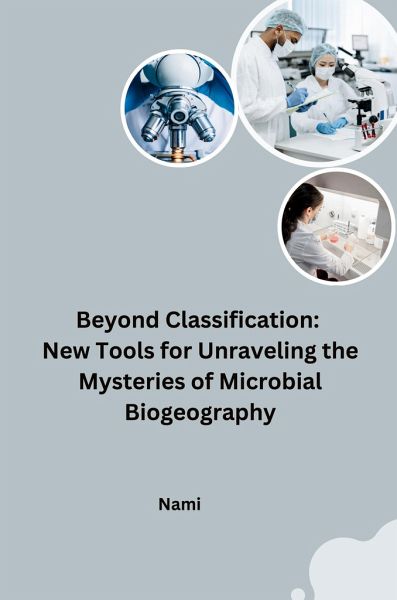
Beyond Classification: New Tools for Unraveling the Mysteries of Microbial Biogeography
Versandkostenfrei!
Versandfertig in 6-10 Tagen
26,29 €
inkl. MwSt.

PAYBACK Punkte
0 °P sammeln!
For decades, microbial biogeography relied on traditional classification methods. But these techniques often fail to capture the vast and enigmatic world of microbes. This is where the tide turns towards "new tools for unraveling the mysteries of microbial biogeography."Imagine a universe teeming with unseen life, where traditional categories fall short. These novel tools, like DNA sequencing and metagenomics, allow scientists to delve deeper into the true extent of microbial diversity. By analyzing their genetic makeup and functional potential, we can paint a more complete picture of the micr...
For decades, microbial biogeography relied on traditional classification methods. But these techniques often fail to capture the vast and enigmatic world of microbes. This is where the tide turns towards "new tools for unraveling the mysteries of microbial biogeography."Imagine a universe teeming with unseen life, where traditional categories fall short. These novel tools, like DNA sequencing and metagenomics, allow scientists to delve deeper into the true extent of microbial diversity. By analyzing their genetic makeup and functional potential, we can paint a more complete picture of the microbial landscape.Here's how these tools empower biogeography research:-Unveiling the Unseen: New technologies identify previously unknown microbial populations, shedding light on their role in ecosystems.-Functional Insights: Beyond classification, these tools reveal the metabolic capabilities of microbes, providing a deeper understanding of their ecological contributions.-Precision Mapping: Advanced techniques enable more accurate mapping of microbial distribution and abundance across diverse environments.However, these tools also come with challenges. Data analysis can be complex, requiring specialized skills and advanced computing power. Additionally, standardizing methodologies across research groups is crucial for ensuring the comparability and reproducibility of results.Despite these hurdles, the potential of these new tools is undeniable. By venturing "beyond classification," we unlock a deeper understanding of the microbial world. This knowledge empowers us to predict how microbial communities will respond to environmental changes, paving the way for more informed conservation and climate change mitigation strategies.














